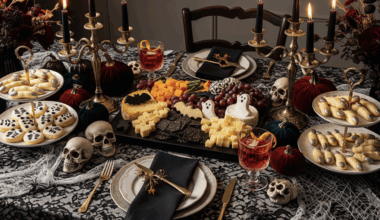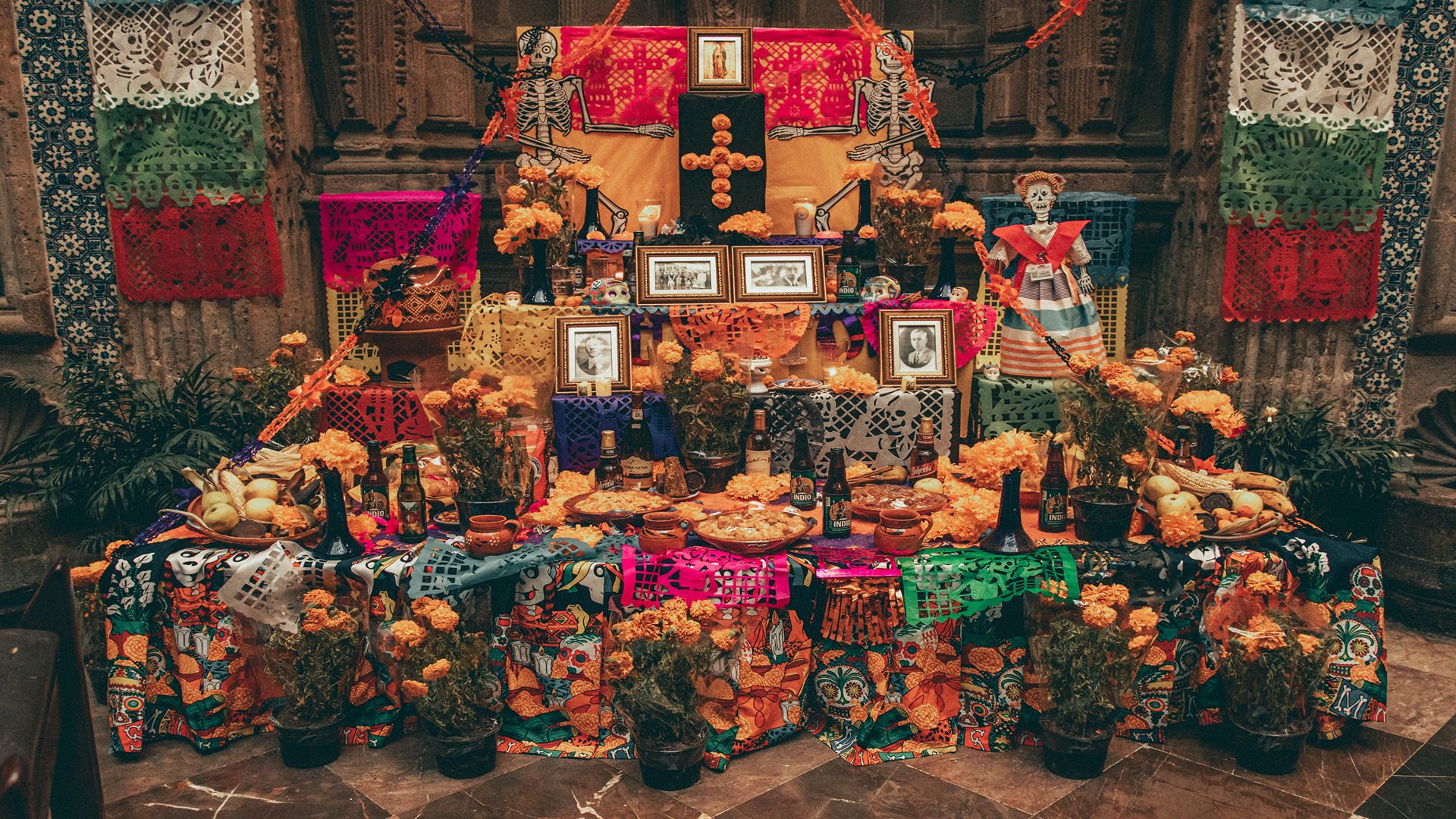
Día de Muertos (Day of the Dead) is one of the most significant and beautiful celebrations in the world, an ancestral ritual overflowing with color, aroma, and emotion in every corner of Mexico. It is a sacred time when the veils between life and death fade, allowing your loved ones to return home to share a night of celebration, food, and warm memories.
Suppose you wish to bring the elegance, meaning, and rich Mexican craftsmanship into your own space. In that case, we present a guide for creating the most iconic elements of the ofrenda, from the luminous paper-mache skulls to the renowned perforated paper (papel picado). It’s time to transform your home into a sanctuary of high culture and memory with these exclusive Do It Yourself (DIY) tutorials:
1. Papel Picado
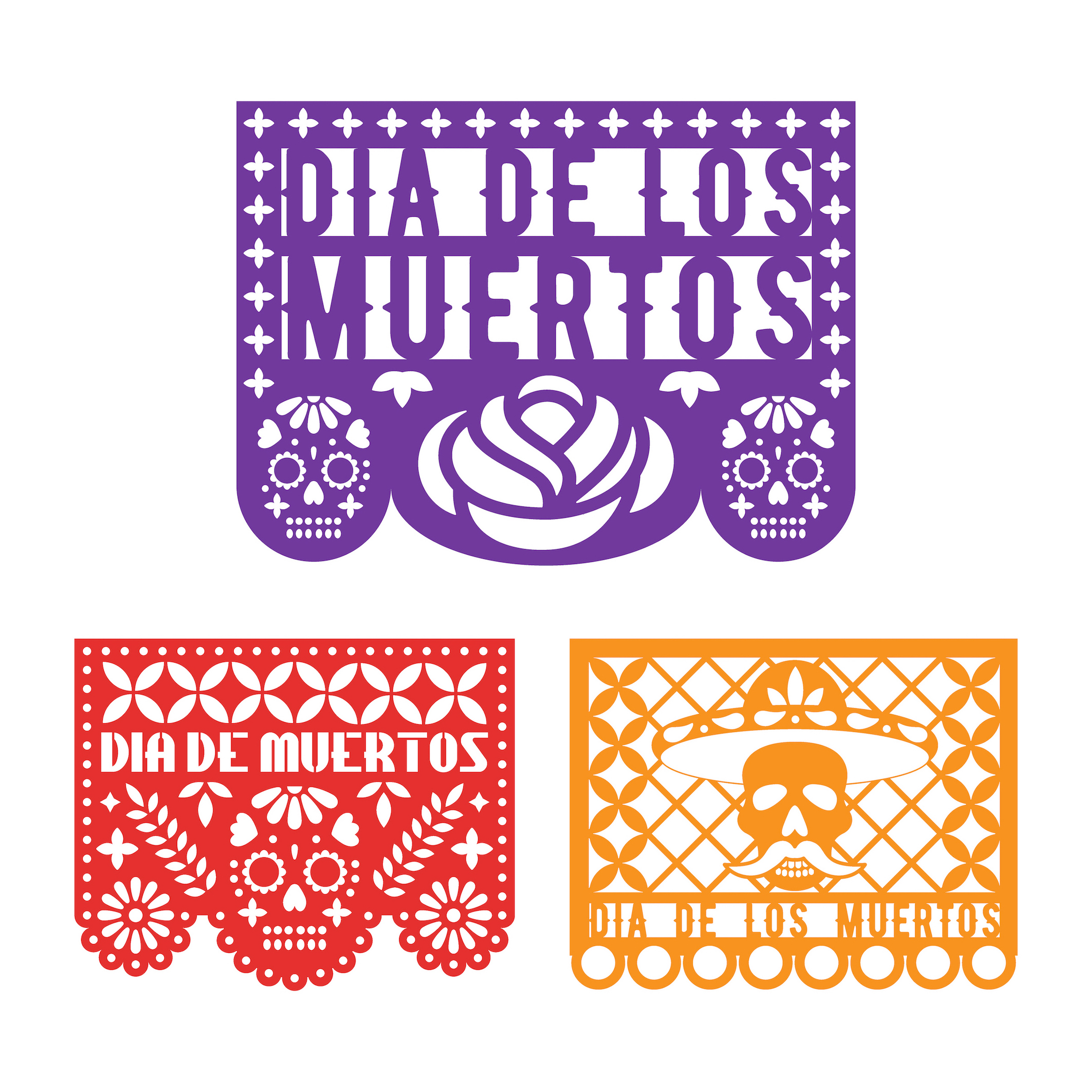
Papel picado is not just a decoration; it is the soul of the ofrenda. It represents the element of air and the fragile nature of life, moving with every breath of wind to remind you of the presence of those who have departed. Achieving the finesse of the artisans of Puebla is an art that demands patience, but the result is an authentic work of art.
Materials:
-
- Tissue paper (papel china): In vibrant colors (magenta, orange, purple, yellow). Remember that quality is key to clean cuts.
- Templates with traditional designs: Catrinas, marigold flowers (flores de cempasúchil), skulls, and geometric fretwork (grecas).
- Cutting tools:
-
-
- Precision blades (exacto or cutter): Essential for fine details.
- Gouges for cartonería: If you are looking for deeper cuts.
- Self-healing cutting mat
- Thin adhesive tape and thick wood or cardboard boards
-
Step-by-step:
- Prepare the blocks: The key technique for mass production and symmetry is to stack 50 to 100 sheets of tissue paper (depending on your skill) and secure them firmly between the two wood or cardboard boards with adhesive tape. The paper must be taut, with no movement.
- Transfer the design: Tape the template with the chosen design onto the paper block. The patterns of grecas and pre-Columbian figures will provide invaluable cultural sophistication.
- The art of the incision: Begin cutting with your precision blade. The secret is not to lift the blade until you finish a continuous line. The cuts must be clean and decisive. If the design is circular, rotate the board, not the blade.
- Detaching and assembly: Once the cutting is finished, carefully remove the template and the boards. Separate the sheets with extreme care, revealing the beauty of the lace-like pattern (calado).
- The presentation: Hang the strips in long rows, creating a colorful, undulating canopy over your ofrenda. The light of the candles through these cuts will create a mystical atmosphere—an authentic visual spectacle that is truly worthy of Mexican culture.
2. Paper-mache skulls
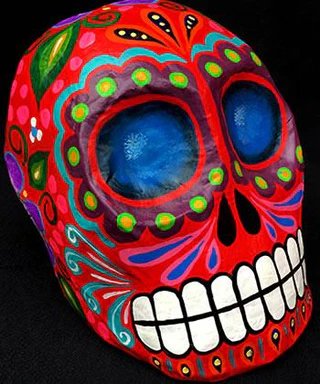
Skulls are the symbol of the festivity, not out of mourning, but because of the irreverent and humorous joy with which the Mexican people relate to death. Paper maché skulls, unlike sugar skulls, offer you artistic permanence and allow for greater sculptural detail and a vintage patina of high decoration.
Materials:
- Balloon or cardboard base: For the initial skull shape.
- Old newspaper and white bond paper
- Artisanal paste (engrudo):
-
-
- 1 part wheat flour
- 5 parts water
- 1 pinch of clove or baking soda (to prevent mold)
-
- Vibrant acrylic paints
- Matte or gloss varnish (for a professional finish)
- Decorative elements (lace, sequins, beads, or fine glitter)
Step-by-step
- Create the structure and volume: If you use a balloon, cover it with strips of newspaper dampened in paste. Apply at least 4 to 5 layers, allowing for complete drying between each one (4 to 6 hours).
- Define the facial structure: To achieve a sculptural finish, use crumpled newspaper and a thicker paste to model the cheekbones, eye sockets, and jaw.
- The final canvas: Apply the last two layers with white bond paper to ensure a smooth and uniform surface. This will be the perfect canvas for your decoration.
- Decorate with floral and geometric motifs: Once dry, paint the base white or a pastel tone. The decoration should be meticulous: use a fine brush to draw the floral arabesques and geometric grecas that honor the traditions of La Catrina. Style tip: choose a color palette inspired by Oaxaca textiles (intense reds, indigos, and gold yellows) for an artisanal luxury feel.
- The finish: Sealing with a professional varnish not only protects the piece but gives it a velvety gloss or matte finish that elevates your craft.
3. Cartonería

Cartonería is the art of modeling three-dimensional figures on a large scale, and it is the ideal medium for you to bring to life the figures of Catrinas and dancing skulls (calaveras danzantes), essential elements that will bring theatricality and distinction to your Day of the Dead celebration.
Materials:
- Thick corrugated cardboard: For the internal structure (skeleton)
- Newspaper and kraft paper
- Thin wire: To shape thin limbs
- Paste (engrudo) (the same recipe as before)
- Acrylic paints and varnish
- Costumes: Lace, velvet, feathers, and ribbons
Step-by-step:
- Draw the skeleton: Cut the cardboard to create the base structure of the figure (body, arms, head). Use the wire to shape delicate hands and dynamic poses (dancing, playing an instrument).
- Add the “muscle”: Stuff the structure with crumpled newspaper, using plenty of paste. The secret of cartonería is to create soft, organic volumes.
- The coating and drying: Cover the entire figure with layers of kraft paper to give it greater strength and a smoother texture. Be patient! The drying process is long but essential (it can take up to a week).
Painting and costumes:
- The face: Paint the skull with the sophisticated details of a Catrina.
- The body: Use high-quality acrylics to give depth and shadow to the clothing. For the best effect, avoid overly bright colors and opt for jewel tones (emerald green, sapphire blue, or burnt gold).
- The attire: True elegance lies in incorporating real textile elements: a wide-brimmed hat with feathers and an antique lace dress. Your cartonería becomes high fashion.
Complementary decorations
The ofrenda is an ecosystem of symbolic elements. To complete your altar, consider these final details:
Luminous Candles
Candles symbolize guidance and light for the path of the souls.
- Material: Glass jars (reused or vintage style).
- Technique: Paint the outside of the jar with white acrylic and, once dry, scrape the drawing of a skull or a marigold flower with a needle or cutter.
- The effect: When placing the lit candle inside, the light will project the silhouette of your design, creating a mystical and elegant shadow and luminosity effect.
Perpetual marigold flowers
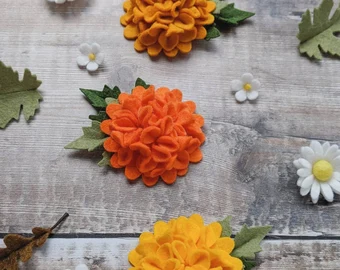
Photo: Etsy.com
The Cempasúchil flower, the “twenty-petal flower,” guides the deceased with its aroma and color, which our ancestors associated with the sun. Although the natural flower is ideal, you can create permanent felt replicas.
- Material: Felt in bright orange and gold yellow tones.
- Technique: Cut circles of felt in various sizes. Fold them in half and then into quarters, cutting the edges to create the effect of a curled petal. Stack and sew several circles in the center to create a realistic volume.
- Use: Use them as decoration at the base of your paper-mache skulls or to adorn the welcome arch of your ofrenda.
The meaning of your effort this Day of the Dead
The Day of the Dead, in its most intimate essence, is a tribute to the art of memory. By dedicating time to these crafts, in addition to decorating a space, you are perpetuating a tradition that has been recognized as an Intangible Cultural Heritage of Humanity by UNESCO. You are weaving, cutting, and modeling a bridge that connects your present with your past.
Every handcrafted element in your ofrenda reflects a profound respect for Mexican culture and a taste for authentic traditions. It is an experience of cultural immersion, similar to those you will enjoy when you visit us, where art, gastronomy, and warmth merge into a memorable atmosphere.
Happy Day of the Dead!

